Everything Has
Two Handles
The Stoics Guide to the
Art of Living
Ronald Pies

Copyright 2008 by
Hamilton Books
4501 Forbes Boulevard
Suite 200
Lanham, Maryland 20706
Hamilton Books Acquisitions Department (301) 459-3366
Estover Road
Plymouth PL6 7PY
United Kingdom
All rights reserved
Printed in the United States of America
British Library Cataloging in Publication Information Available
Library of Congress Control Number: 2007940211
ISBN-13: 978-0-7618-3951-4 (paperback : alk. paper)
ISBN-10: 0-7618-3951-8 (paperback : alk. paper)
 The paper used in this publication meets the minimum
The paper used in this publication meets the minimum
requirements of American National Standard for Information
SciencesPermanence of Paper for Printed Library Materials,
ANSI Z39.481984
This book is dedicated to the memory of my mother, Frances Pies Oliver, who understood the rational essence of the Stoic world view and gently transmitted it to her children.
Everything has two handles: one by which it may be borne, another by which it cannot.
Epictetus
Contents
Acknowledgments
I wish to thank Ira Allen and Linda Orlando for their expert assistance in editing this book. I also wish to thank Richard Berlin MD for his reading of the manuscript; Cynthia Geppert MD for her professional and spiritual inspiration; and Robert Deluty PhD for his encouragement during the early development of the manuscript. Finally, I thank my wife, Nancy Butters LICSW, for her patience and support.
Introduction
This is not a book for philosophers, nor is it a work of great scholarship. It is simply a book dedicated to the intelligent layperson who wants to live well and happily. While the principles discussed here are ancient, I believe they are as relevant to our liveshere and nowas they were to the Greek and Roman philosophers who first developed them. And since, in some respects, our modern lives present even more challenges and stresses than the ancient Stoic philosophers knew, the lessons of these sages may be even more relevant today than they were two millennia ago.
My aim is to let the ideas of Stoicism bubble up to the surface of our understanding, rather than to present them as a series of lecture topics. I hope you will find that, as each of the philosophical passages is presented, you will begin to understand both what Stoicism is and how it can make an important difference in your life. Although I will focus on one of the later Stoic philosophersthe great Roman Emperor, Marcus Aurelius (121-180 CE.)I will also draw upon other ancient and modern sources when it serves our purposes, including many from the Judaic and Christian traditions.
One of the misconceptions about Stoicism is that it lacks a spiritual basisthat its just cold, hard logic. In reality, Stoic philosophy draws on deep spiritual roots, and many people of faith will find parallels with their own religious background. (Those familiar with Buddhist and Taoist philosophies will find many features in common with Stoic philosophy.) In addition to citing some of these religious and spiritual sources, I will be brash enough to offer some commentary of my own, as well as some composite case vignettes, based on my own experience as a psychiatrist. (All names are fictitious, and most of the characters in the case vignettes represent several actual or typical patients.) Occasionally, Ill even throw in a joke or two, since the Stoics were not renowned for their rollicking sense of humorand keeping your sense of humor is one of the keys to health and happiness!
Before plunging into Stoic philosophy, a little orientation may be useful. When you hear the word stoic, what comes to mind? Maybe a character from Masterpiece Theater? One of those stiff-upper-lip 19th-century-British types, who keep their emotions under such tight wraps that their faces seem to be stitched in place? Or, if you are a baby boomer who grew up with the TV show, Star Trekone of my favoritesmaybe the character of the Vulcan, Mr. Spock, comes to mind. It turns out that Mr. Spock does share some features with the ancient Stoic philosophers, although perhaps not others. (For one thing, Mr. Spock is sometimes more focused on mastering his emotions than on embracing a view of the world that ultimately makes such mastery unnecessary.)
To be sure, stoicism has acquired something of a bad reputation. For many of us raised in the 60swith its let it all hang out credothe idea of being stoical sounds a lot like being, well, uptight and stuffy. Ours has been an age in which expressing emotion has been valued much more highly than understanding emotionor realizing how our emotional over-reactions can detract from our happiness. The pioneers of cognitive-behavioral therapy (CBT), such as Dr. Albert Ellis and Dr. Aaron Beck, have long recognized this. Ellis, in particular, draws heavily on the Stoics (especially the slave, Epictetus) in formulating what he calls Rational Emotive Behavioral Therapy (REBT).
I hope to show you that genuine Stoicism is much more than keeping a stiff upper lip or tamping down your feelings with an iron rod. Stoicism, on the contrary, is a kind of mental and spiritual outlook. Indeed, depending on how we understand Stoic concepts like logos, we could say that the Stoic is someone who aims to live in accordance with Gods, or Natures, eternal laws. Although you will find many passages by various Stoic writers to support the idea of emotional modulation, the Stoic ideal was not an emotionless, unfeeling human being. Rather, there is a moderate middle ground that best suits us as rational creatures. As Marcus Aurelius tells us, Perfection of character possesses this: to live each day is if the last, to be neither feverish nor apathetic, and not to act a part (Farquharson, 52). Indeed, the Stoics are said to strive for apatheia, but it would be a mistake to translate this as apathy in a negative sense; rather, apatheia implies a kind of equanimity of spirit. Marcus tells us, A mans joy is to do what is proper to man, and mans proper work is kindness to his fellow man... (Farquharson, 56, emphasis mine). So Marcus is far from wishing that we suppress all forms of joy! His aim is to teach us to find true joy through benevolent action, in accordance with our natural reason. We find a similar sentiment expressed by the Jewish sage, Rav Eliyahu of Vilna, known as the Vilna Gaon (172097). He tells us, Desires must be purified and idealized, not exterminated (Baron, 1985).
The Stoic aims to understand the way things are, and to live accordingly. And, although you do not have to believe in God to be a Stoic, you do need to understand how the universe is, well, set up. When we understand and accept the way things are, we find ourselves at peace, and are free to pursue our higher pleasures. When we refuse to accept the way things are, we make ourselves (and often others) unhappy. When you live your life according to Stoic principles, you dont need to tamp down your feelingsrather, the feelings you have are actually appropriate to the way things are.
By now, you may already be thinking, But arent there times when we should not accept the way things are? When there are terrible social injustices, for example, arent we obligated to change the status quo? Those are excellent questionsand ones which, in my view, the Stoics answer with a very clear and forceful



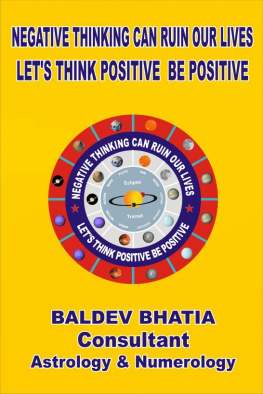

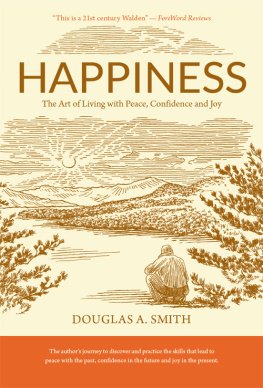
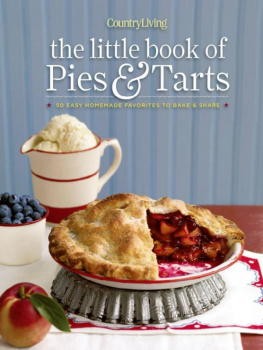
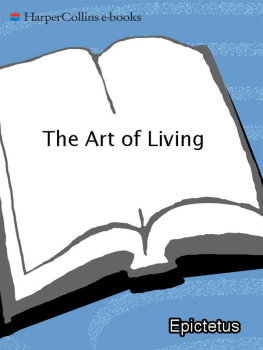
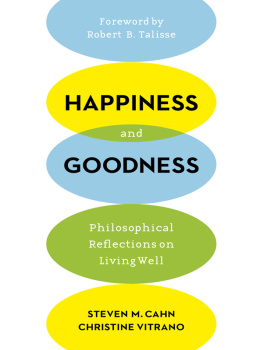

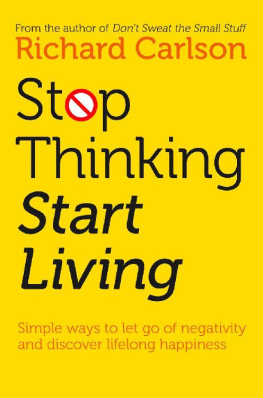

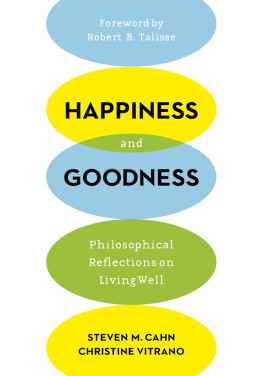

 The paper used in this publication meets the minimum
The paper used in this publication meets the minimum